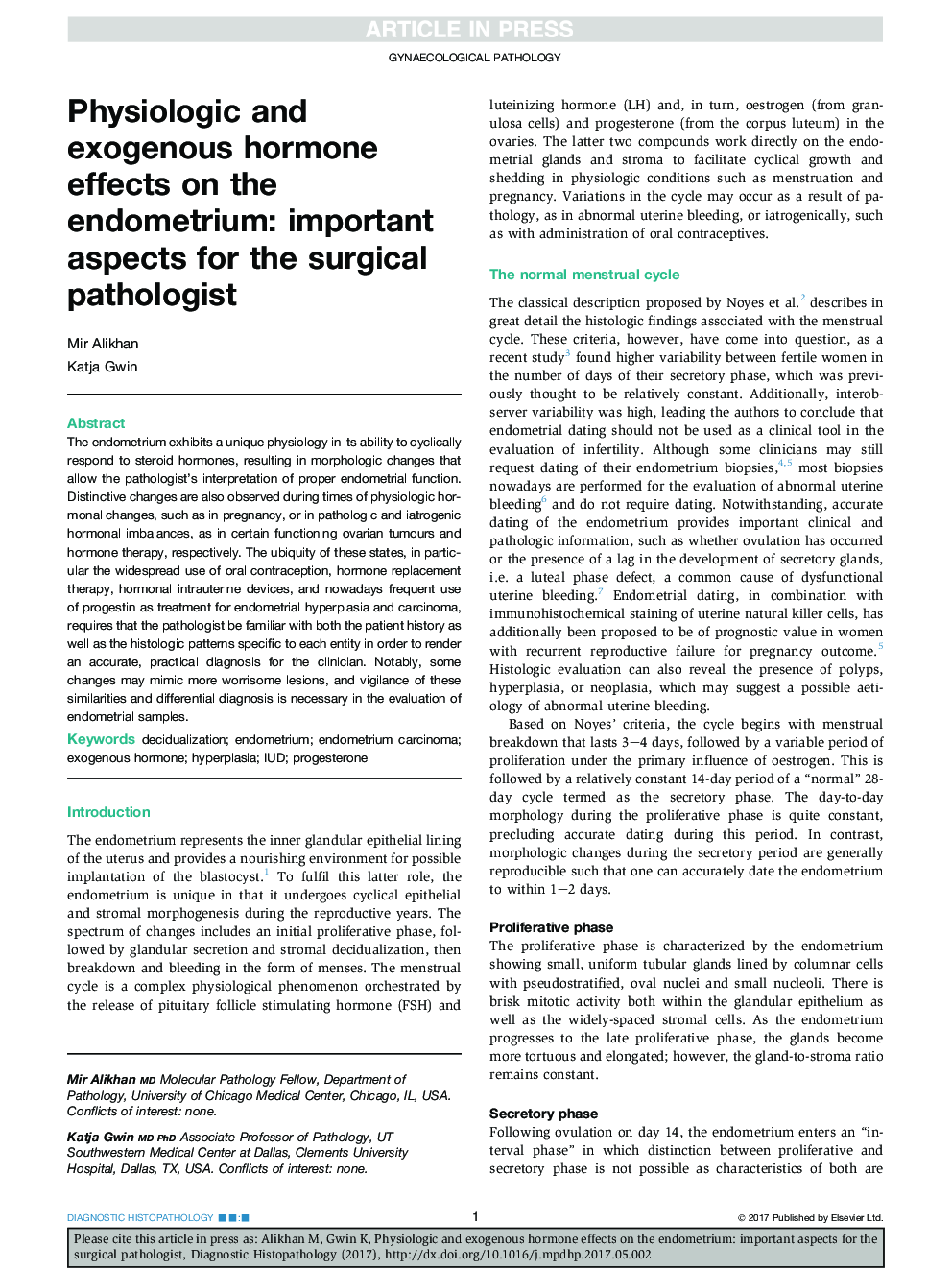| Article ID | Journal | Published Year | Pages | File Type |
|---|---|---|---|---|
| 5716017 | Diagnostic Histopathology | 2017 | 7 Pages |
Abstract
The endometrium exhibits a unique physiology in its ability to cyclically respond to steroid hormones, resulting in morphologic changes that allow the pathologist's interpretation of proper endometrial function. Distinctive changes are also observed during times of physiologic hormonal changes, such as in pregnancy, or in pathologic and iatrogenic hormonal imbalances, as in certain functioning ovarian tumours and hormone therapy, respectively. The ubiquity of these states, in particular the widespread use of oral contraception, hormone replacement therapy, hormonal intrauterine devices, and nowadays frequent use of progestin as treatment for endometrial hyperplasia and carcinoma, requires that the pathologist be familiar with both the patient history as well as the histologic patterns specific to each entity in order to render an accurate, practical diagnosis for the clinician. Notably, some changes may mimic more worrisome lesions, and vigilance of these similarities and differential diagnosis is necessary in the evaluation of endometrial samples.
Related Topics
Health Sciences
Medicine and Dentistry
Pathology and Medical Technology
Authors
Mir Alikhan, Katja Gwin,
